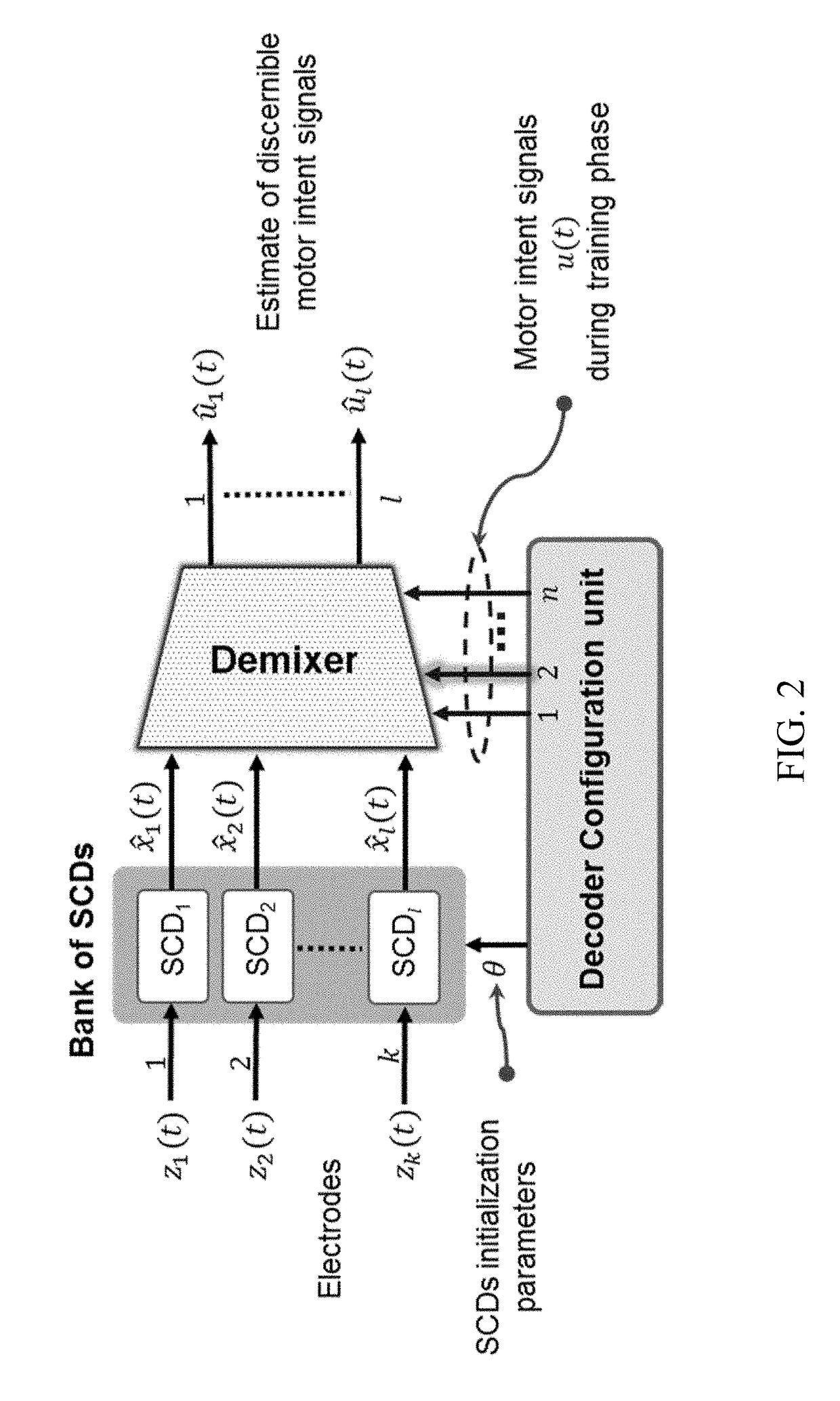Systems and methods for decoding intended motor commands from recorded neural signals for the control of external devices or to interact in virtual environments
a neural signal and intended motor technology, applied in the field of systems and methods for decoding intended motor commands from recorded neural signals, can solve the problems of affecting the performance of the prosthesis, affecting the ability of the prosthesis to be used, and limiting the low-level amputation, so as to achieve faster and more efficient transmission, suppress noise, and normalize the spike amplitude
- Summary
- Abstract
- Description
- Claims
- Application Information
AI Technical Summary
Benefits of technology
Problems solved by technology
Method used
Image
Examples
embodiment 1
[0107]A system to decode intended motor actions from neural signals and / or muscle signals recorded by multiple neural interface electrodes and / or from EMG signals (e.g., EMG signals recorded by multiple electrodes placed in or near muscles).
embodiment 2
[0108]The system according to embodiment 1, that operates in real-time and is implemented in a portable, low-power configuration.
embodiment 3
[0109]The system according to any of embodiments 1-2, that interprets signals from a single or multiple electrodes to enable single or multiple degree-of-freedom control of a powered prosthesis.
PUM
 Login to View More
Login to View More Abstract
Description
Claims
Application Information
 Login to View More
Login to View More - R&D
- Intellectual Property
- Life Sciences
- Materials
- Tech Scout
- Unparalleled Data Quality
- Higher Quality Content
- 60% Fewer Hallucinations
Browse by: Latest US Patents, China's latest patents, Technical Efficacy Thesaurus, Application Domain, Technology Topic, Popular Technical Reports.
© 2025 PatSnap. All rights reserved.Legal|Privacy policy|Modern Slavery Act Transparency Statement|Sitemap|About US| Contact US: help@patsnap.com



